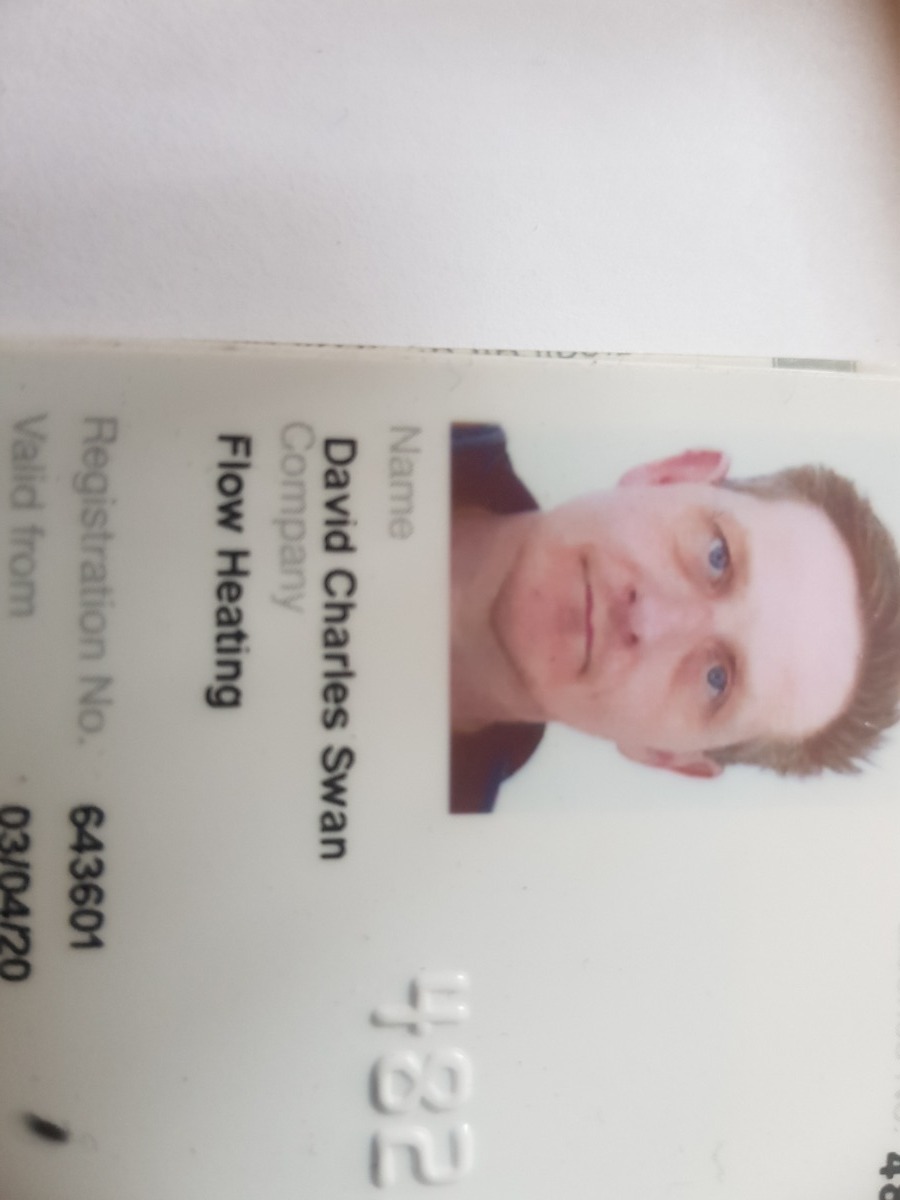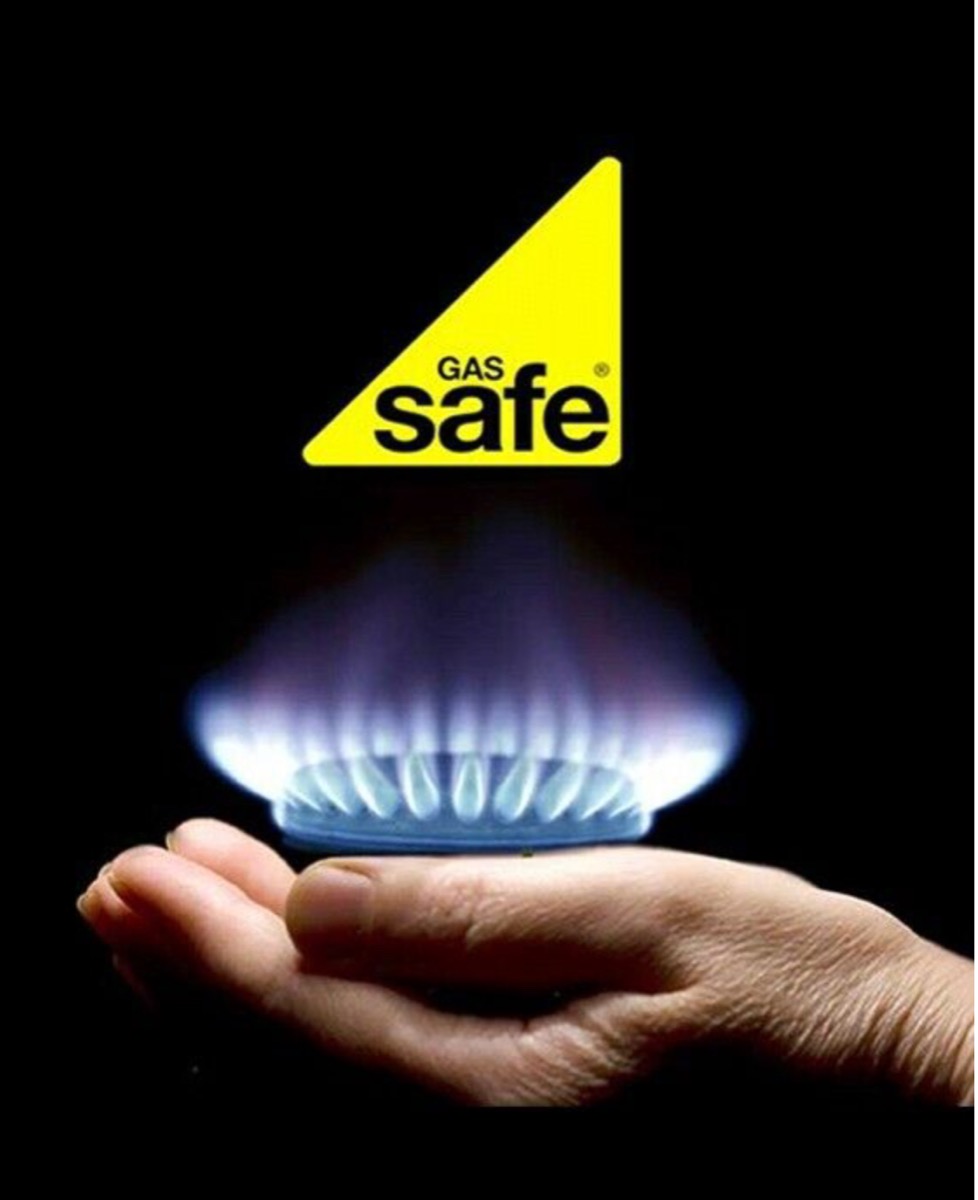Local heating engineer who can quickly and easily upgrade thermostatic radiator valves (TRVs) on all of the radiators and add a towel rail radiator in the bathroom.
No job too small, bleeding a radiator or installing a magnet filter near the boiler. Or too big, adding new radiators to a house extension on an existing central heating system or installing a brand-new central heating system.
Domestic heating engineer services for heating circulation include;
Pipework
- installing additional pipework for new radiators
- replacing a section of leaking or crushed pipes
- detecting a water leak in the heating circulation
- installing underfloor heating circuits
Radiators
- install, whether adding on to an existing central heating circuit, replacing an old rusty cold radiator for a new working one, or installing an entire brand-new circuit of radiators
- repair, radiators can leak from pinholes in the radiators or weepy perished valves
- bleed, to remove trapped air from radiators, making radiators cold and inefficient
- replace radiator valves with modern thermostatic radiator valves to control heating in individual rooms
Boiler components
- pump, circulates hot water from the boiler to the radiators
- diverter / zone valves, in charge of directing flow of hot water to either heating, hot water or both
- printed circuit board, known as PCB, communicates with all of the electronic components in the boiler
- magnet filter, captures debris in the system as it circulates through the magnet on the way back to the boiler from the radiators
- pressure relief valve, stops boiler from becoming dangerous high in pressure
- automatic air vent, lets air out of the boiler
- overheat thermostat, prevents boiler from overheating
- gas valve, controls the gas flow to burner
- ignition, which lights the pilot / main flame in the boiler
- fan, pushes air through the boiler for combustion
So, if you need a heating engineer to service or repair circulation parts in your home HaMuch has thousands of friendly, Chartered Institute of Plumbing and Heating Engineering (CIPHE) registered professionals ready to help replace a faulty central heating pump, cut out blocked heating pipes and replace a rusty radiator, fitting it with new radiator valves.
Do I need to hire a local professional 'central heating engineer'?
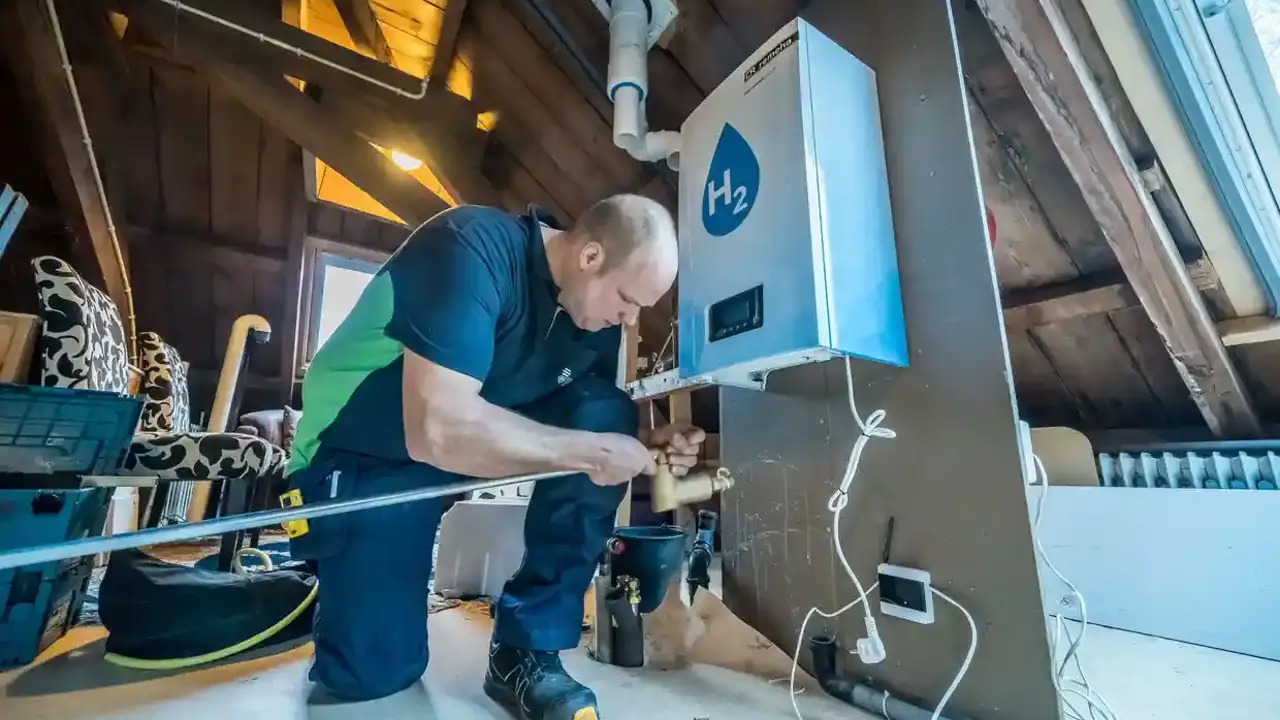
A boiler is the heart of the central heating system. Thanks to the boiler, your home can stay warm and cosy, especially during winter. If your boiler, circulator pump and heating controls are all working correctly but you find that your radiators aren’t getting warm and that the room temperature is dropping then this is an indicator that you have central heating circulation problems. Another symptom is if when your bleed or drain a radiator corrosion debris, dirty black or brown water also know as sludge is present.
A central heating engineer is expertly trained to identify and fix any circulatory, clear pipework of air locks or mechanical blockages with your system. They can perform a powerflush to clear sludge, replace specific parts of your boiler or fix stuck thermostat radiator valves, and even fit a new boiler, should the need arise.
HaMuch makes it easy to find qualified and trusted central heating engineers in your local area. Simply use our convenient three-step online quoting system to find the engineer who’s perfectly suited to your job.
What do heating circulation engineers near you do?
Heating circulation engineers are different from plumbers and other home service engineers because they specialise in boiler and thermostat fitting, removal and maintenance. A heating circulation engineer will provide:
- Central heating circulation service: The issues with heat circulation must first be assessed. Engineers will check if the boiler is operating well and then check the pressure of the burner. They will examine the pumps, radiator valves, feed and expansion cistern for signs of over-pumping or sucking-in through the open vent.
- Central heating circulation repair: Once the problem has been diagnosed, whether it’s a boiler issue or a faulty pump, the heating circulation engineer can efficiently carry out the repair. Once work has been completed, the engineer will re-examine the whole system, including the water, just to check that there are no further problems.
- Central heating circulation maintenance: A heating engineer can offer a maintenance service that guarantees your central heating system will continue to properly function after they have fixed or replaced it.
- Home central heating installation and removal: Engineers can replace any type of central heating system, from a lone gas boiler unit to a full pipework system. They can also offer installation of central heating systems for keeping your home warm, removing the existing system first if necessary.
- Assessments and safety inspections: Are you concerned your central heating may not be safe or up to required standards? Heating engineers are qualified to carry out checks and inspections.
How to find a specialist heating circulation heating engineer near you
To find a specialist heating circulation heating engineer near you, follow our simple three-step process:
- Post your job: Enter the trade you need and the postcode of your project then describe your job.
- Get quotes: We’ll send your job details to heating circulation heating engineer specialists in your area and match you with local professional tradespeople qualified and skilled to complete your project. We’ll notify you via text or email when a tradesperson is available to quote.
- Select your tradesman: Compare rates, proximity, review profiles and experience of the tradesmen interested in working with you. You can use HaMuch to safely message, ask questions or just phone them — you’re in complete control!
Our search tools are designed to help you find a tradesman that best suits your needs, budget and location.
Are you looking for a heating circulation heating engineer? Find the perfect tradesmen for you on HaMuch. Our directory lists vetted, trusted heating engineers near you.
"IF WATER OR GAS GOES TO IT WE DO IT" Pipe it up plumbing and heating is a family run plumbing and heating business with 20 years’ experience. We’re experts in plumbing and heating repairs, fittings and emergencies. We offer plumbing services to Northampton, Kettering, Wellingborough and surrounding areas. Whether its an important commercial plumbing job, or your kitchen sink playing up – well be there. We&rsquo...
✓ No job too small. ✓ Discounted or free service available to charities. ✓ No call-out charges. _________________________________ + Leaking taps, toilets, showers, radiators, pipework, filling loops, etc. + Blocked or malfunctioning toilets. + Washing machine & dishwasher installation or decommissioning. + Garden tap installation. + Radiator relocation. + New radiators. + Thermostatic radiator valve (TRV) installation. _________________________________ "Lovely man, prompt,...
WE ARE PIPEWORKZ LTD, LEADING THE WAY IN AFFORDABLE AND RELIABLE PLUMBING & HEATING COMPANIES IN HAMPSHIRE AND SURREY . ALL ASPECTS OF PLUMBING & HEATING WORK UNDERTAKEN AT COMPETITIVE PRICES. We pride ourselves on offering a hassle free and affordable service where the customer needs always take priority, as do excellent quality workmanship and operating to modern standards. As a company we are confident that we can meet all your requirements on your next plumbing & heating proj...
Pipeworx plumbing heating and Gas is a reliable friendly company with competitive rates . I have 20years experience in the industry and all the latest tools to help keep the time to a minimum where possible.
small firm offering the personal service combined with experiance of being in the trade for over 40 years
Ive been in the industry for over 22 years. I have a large network of tradespeople that I believe in and can recommend even if I cant get to a job myself. Its always worth getting in touch with me for advise and help on whatever project you have big or small. Trust, honesty and integrity are very hard to come buy these days, but I have recommendations from many, many clients and they will tell you I am fair and reliable.
Fully insured gas safe registered engineer with 14 years experience in the pluming and heating industry, references available.
Reasonable price and good value for money reliable and trustworthy friendly workmanship guarantee public liability insurance 30 years experience clean and tidy
Reliable trustworthy clean and tidy hard working conversational
Fully qualified gas heating engineer. Provide an honest quality service. always ready to help.
We are specialists in leaks & burst pipe emergencies such as: Water leaks Burst pipes Cracked pipes Frozen pipes Dripping taps Leaking radiator Floods Leaking toilet Overflows Toilet Repairs
We are a well-established plumbing and heating company that has been established since 1967, offering professional gas fitting, plumbing services, boiler installations and central heating installations throughout the Oxford area. We take a great deal of pride in providing a personal service and believe in putting each of our customers first, every single job is important to us! We have built up a fantastic reputation over the years by providing a professional and friendly service that de...
Heating Services Fitting, Repair & Replacement of all Types of Boilers Radiators and Thermostatic Radiator Valves Pumps, all Valves and Central Heating Controls Thermostats and Carbon Monoxide Controls Tanks and Cylinders Replacements Immersion Heater Fit/Replacements Heat Exchangers System Descaling, Cleaning and Power Flushing Domestic Water Heaters, Gas Fires, Gas Cookers/Hobs Gas Safety Inspection / Certificates Boiler Types High Efficiency Boiler (e.g. Condensing System Boiler) High Pe...
I am a reliable Gas Safe Registered gas and heating engineer based in the North East of England covering Northumberland, Newcastle upon Tyne, Gateshead, North & South Tyneside and County Durham. I can offer a cost effective installation and repair service for all major domestic gas boilers including Glow-worm, Baxi, Vaillant, Ideal and Worcester Bosch. I can install and replace individual radiators, heated towel rails, thermostatic radiator valves or entire systems. I also install, servic...
Plumbing domestic and industrial. Commercial and domestic gas and lpg . Commercial catering gas ducked cleaning swimming pool gas boilers and water treatment. High pressure pipe cleaning and drain cleaning and unblocking .unvented hot water systems .Testing soil stacks pressure testing pipework to any size. Scerwed iron pipe in any size .Drain CCTV camera survey .Brick stone and concrete water pressure cleaning.
1st Action Gas & Heating. Our company has near 30 years experience 24 HR emergency service, delivering superb quality installations across Telford & Shropshire. We install bespoke unique Heating Systems from 1 bed upto 5 bedroom property’s. Breakdown Repairs, Gas pipes & Water Pipe installation, Leaks & Burst pipework Repairs. Bathroom , Ensuite , Kitchen pipework 1st & 2nd fix Engineer
Gidney Plumbing & Heating Ltd covers a wide range of task from: Faulty tap repairs & changes. Ball valves & floats. Showers & pumps. Water softeners. Hot water cylinders. Swimming pool filters and pumps. Bathroom & wetroom installations. Radiator & valve replacements. Underfloor heating. Heating system repairs. New boiler installations. Boiler servicing, breakdowns and landlord certificates. Renovation & new builds. More services offered, Just as...
Hello im Dean and im the owner of Presland Services. With over ten years experience in all aspects of Plumbing and Heating I can ensure you will get the very best job every single time. No jobs too big or too small. Free quotes can be provided. All work is gauranteed.. Im always looking to do the best possible job and will never compromise on quality or service. Landlord friendly digital certification so there is no waiting around for certificates to be posted. Emails are live monitored f...
Total Drainage & Plumbing Solutions – Domestic & CommercialWe have over 25 years experience in the drainage and plumbing industry, covering both commercial & residential customers. We specialize in providing total drainage & plumbing solutions, covering all aspects such as clearing blocked sinks, baths, toilets, gullies , stack pipes, reconstruction & repairs of manholes - inspection chambers, foul and surface water systems.Investigation identification & clearance of all types of blockages usi...
JCT Services are friendly, reliable plumbing/ pipe fitting service based in the north east. I descend from a family of plumber/pipe fitters as my grandad, his brother, my uncle and father were all plumber/ pipe fitters. Im a perfectionist and like everything neat and plumb. Why not check our Facebook page or go to our website and have a look for yourself? Facebook: JCT plumbing-heating services. Webpage: www.jctservices.co.uk or contact: 07743924343
Ctc heating pride ourselves on having a reliable service. We aim to be as flexible as possible on working times as we can appreciate everyone has busy schedules. Whether you need a new boiler or just a radiator valve changing no job is too big or small. We aim to put the customer first always and will always give honest advice.
Operating since 1976, British gas trained gas service engineers. Servicing & repairing to all domestic gas boilers & system controls. energy saving controls fitted, time clocks, thermostatic radiator valves, smart controls. Magnetic heating system filters installed. Specialise in Alpha, Intergas, Vokera, Atmos, Potterton, Baxi boilers , along with other brands. Fully insured, work guaranteed, Service agents to some manufacturers. Operating since 1976. Reliable no nonsense service.
At Geez Plumbing we offer a range of plumbing services, which include installing and repairing all types of plumbing systems and fixtures, such as pipes, valves, mains, sinks, water heaters, pumps and showers. We primarily cover areas of East Sussex and Kent, if you are outside of these areas however, we will discuss your job on a case by case basis and see if we can assist. We pride ourselves on our strong organisational and communication skills, which are well demonstrated across all...
Here at 1st Choice Plumbers , we specialise in repairing, servicing and installing central heating systems and full bathroom installations. We are reliable, trustworthy and fully-qualified plumbing, heating and gas engineers. We undertake all aspects of plumbing, heating and gas work, including: Boiler installations and replacements General plumbing Powerflushing Central heating upgrades Radiators and valves Installations, servicing and all repairs of gas boilers, water heaters, fires ...
Hello I am well regarded in my industry and offer very competitive rates,a reliable and accountable service and no call out charges I have 30 years experience within many environments covering landlords certificates,servicing of gas boilers,gas boiler and central heating breakdowns and diagnostic skills,I also carry out repairs and replacement of taps,toilets,showers,baths,basins,sinks radiators cylinders,tanks and associated pipework. All work is guaranteed for 6 months and any product fitte...
David Bell Heating and Plumbing - Provide great customer service, reliable small family business. Gas Safe registered with over 13 years experience. Boiler and Gas Fire service and repair, replacement Gas Boilers and Gas Fires installed, replacement radiators and TRV to improve efficiency and performance. Landlord Gas certificates Power flush radiators can improve performance of your heating system.
Our engineers are friendly, highly trained and have years of industry experience. We offer a great package to all our new and existing customers, and our support and aftercare is second to none. We offer all of the following with every new boiler installation Free chemical flush Free thermostatic radiator valves (TRVs) Free system magnet and limescale reducer Free 10 year warranty on most of our boilers
Ascott heating services offers a wide of cover on all kinds of industrial heating equipment. Ascott heating also carries out industrial gas/water pipe installation maintenance & alterations. Gas pipework pressure testing & landlords safety certificates also available.
WE CAN FIT ANY TYPE OF BOILER OR HEATING SYSTEM Ambien Heating Specialists are qualified to service and install Gas, LPG and Oil boilers and heating systems. We fit modern boilers which are much more energy efficient than older conventional boilers, as more of the energy contained within the gas is converted into heat which is fed into your radiators. A modern boiler will burn less gas as your house gets warmer, cutting down on the amount of gas needed. A significant proportion of the gasses ...
OVER 15 YEARS EXPERIENCE IN KITCHE AND BARTH ROOM TAPS REPAIRS,DRAIN AND WC UNBLOCK,WATER AND GAS LEAKS,MAIN WATER STOP COOK,VENTED AND UNVETED CYLINDER REPAIR, BURST PIPE REPAIRS,GENARAL PLUMBING & HEATING .LANDLORD SAFETY CHECK AND CERTIFICATION. NEW BOILER INSTALATION ,CENTRAL HEATING POWER-FLUSH.BATH, HAND WASCH BASIN,SINK,GAS COOKER,GAS PIPE,WATER HEATER, SHOWER PUMP ,CYLINDER INSTALLATION. UNSAFE GAS APPLIANCES REPAIR. 5 YEARS TO 10 YEARS BOILER MANUFACTURER ...
Company Profile JPF Heating, Gas & Plumbing specialise in the installation, servicing and repair of gas boilers and central heating/hot water systems. I powerflush central heating systems, replace hot water cylinders, radiators and pipework and also service and repair gas fires, cookers and warm air units in Herts, Beds, Bucks and North London. Prior to setting up JPF Heating, Gas & Plumbing in 2014, I was a technical engineer for eight years at British Gas in their ‘Ser...
Our services bathroom installations, general plumbing, new radiators, underfloor heating, unvented inboiler repairs and boiler installations
southend and surrounding areas
KJF Plumbing And Heating are based in Southend-on-Sea, Essex. We offer our services to customers in Southend-on-Sea and the surrounding areas. Free quotes
Our services bathroom installations, general plumbing, new radiators, underfloor heating, unvented installation and servicing ,power flushing, blocked drains, 24hour ...
Hi my name is Paul After working in the plumbing and heating industry for a while we as a family decided to take the plunge and start going it alone I work as a sole trader but very family oriented We under take all aspects of heating and plumbing From the simple jobs to full blown heating system installations to landlords and the yearly service to radiator trvs We also attend to pipe work. Gas or water or soil stacks to drains
Hi, we are a local Powerflush company specialising in powerflushing problematic systems, restoring heat back into poorly circulating radiators , pipe work and boilers. We have over 35years experience and all jobs are certified.
Hi i am a friendly and reliable plumbing and heating engineer, i have worked on the social housing projects for 20yrs, fitting new boilers, new radiators, fixing leaking taps and pipework. I have also worked in the commercial industry in hospitals and offices.
We have experienced in all plumbing work . From coper pipe , plastic pipe Underfloor heating Boiler - vailant , ideal , worcester ect Cylinder
London
Full Plumbing
Central Heating
Paintin tiling
Bathroom fitting
Kitchen fitting
We ofer experienced / reliable plumbers
All work is guaranted
Burst pipes & drippingToilet unblockingSink unblockingLeaking RadiatorFlooding emergencies
London
Essex
I mostly cover emergency jobs like pipe leaks, radiator leak, boiler leak and breakdown, installation of bath and kitchen taps, toilet repair and replacement, gas leaks
Greater Manchester
To me quality and customer satisfaction is most important
Mide&Moores Plumbing and Heating Services will provide you with a first class service for your central heating and plumbing needs!. With over 10 years experience in the industry, we cover a variety of work; ranging from dripping taps to central heating installations (see full list below). Boiler Installation Boiler Repairs and Servicing Power Flushing Landlord Gas Safety Certificates Radiator Installations Gas Cook...
WF Builders your local Plumbers, Gas and Boiler specialists covering the Croydon area, for more information of areas that we cover please see the bottom of this page. We pride ourselves on a first class service and customer satisfaction is our main priority. WF Builders want to make sure our customers are able to have their plumbing needs met at anytime they need us.All our engineers are fully qualified gas safe registered engineers, trained to an exceptional standard making sure you receive th...
We are Plumber in Reading Co. A Local plumbing and heating company based in Tilehurst, Reading, Berkshire. We are a reliable and customer focused small business. We provide the best plumbing and central heating service with the best prices in Berkshire. Genuine 24 hour emergency call out service. No Call out Charge. Super fast Same day service. Fast & Friendly Service. Highly Experianced and Qualified Plumbing and Heating Engineers. Always low prices on Plumbing and Heating Services. ...
Hello and welcome to JNE PLUMBING & BUILDING LTDWe are a family ran plumbing and building company established in 2020.Both our partners have over 26 years experience in the plumbing building and gas sector between them.We offer a broad range of plumbing and building services.We offer services from plumbing repairs to installations, gas services include annual boiler service, boiler break downs, gas safety checks to boiler installations.We offer building services such as property extensions, kitc...
We cover all aspects of gas, plumbing & heating for the domestic clients We offer a wide range of services, everything from bathrooms to boilers, radiators to under floor heating, and all the jobs in-between. All our work is Gas Safe Registered & Insured. Thanks
Commercial gas pipe work, all catering installation, CP42 certification
Newcastle, Sunderland, Durham & north up to Alnwick
Recently posted heating circulation jobs
16/04/2024
Heating-engineer near Pe29 1ur
Replace 2 radiators with new ones (like for like)
14/04/2024
Heating-engineer near WD6 2PR
Look at radiators currently installed, potentially looking to replace/renew radiators and valves for 9 radiators across the home. Also looking to replace one of the radiators for a more powerful radiator with better heating.
21/03/2024
Heating-engineer near L6 0AJ
A 2 bed house full rerepipe/replumb
14/03/2024
Heating-engineer near BD6 3SB
Install 1x radiator in hallway and Hive Thermostat
10/03/2024
Heating-engineer near TN26
Move an oil boiler replace 2 radiators
05/02/2024
Heating-engineer near Kilburn
My radiators doesn't work propely
03/02/2024
Heating-engineer near Co30qt
New heating system, bathroom, en suite, kitchen, utility
02/02/2024
Heating-engineer near TF65BL
Need a new Honeywell 3 port motorised valve fitted in airing cupboard
20/01/2024
Heating-engineer near NG8
Hello I just see you on Google...can I ask how much you charge for replacing new central heating radiator. Thanks
20/01/2024
Heating-engineer near Leeds
One of my radiators is leaking
15/01/2024
Heating-engineer near TS58HT
Boiler works fine and hot water but downstairs radiators not pumping heat so possible air lock and possible valve replacement on one of the radiators in living room.
29/11/2023
Heating-engineer near SL4 4NP
Two radiators are not working: one is absolutely cold, and another radiator is a little warm.
26/11/2023
Heating-engineer near Al86ju
Install 4 radiators
19/11/2023
Heating-engineer near BD3 7FH
Radiators are not working on top floor. Boiler is working fine and all radiators are working on ground and 1st floor but no radiator is working on the 2nd floor.
11/11/2023
Heating-engineer near IP13 0RD
I am looking for an annual service contract starting 3/12/23
10/11/2023
Heating-engineer near TW2 6DF
Need to fit new circulating pump gravity fed heating has isolation valves so no need to drain.
19/10/2023
Heating-engineer near SG14 3BH
Water supply pipe replacement. OLD LEAD PIPING C. 60yds stopcock to meter
18/10/2023
Heating-engineer near CR0 3SL
Replacing radiator valve
11/10/2023
Heating-engineer near NE8
2 radiators on one side of property not working at all, no hot spots when heating on, both radiators completely cold, even the inlet pipe. I suppose that means there's a leak however I can't find it. Boiler was replaced last year and all pipes are fully accessible from below via the basement
11/10/2023
Heating-engineer near ME10 4HG
Two radiators to be disconnected. Flushed out. Replaced. Sludge remover added to system. Drained after a week and refill system with inhibiter.
07/10/2023
Heating-engineer near BA12RU
Hi I need 4 radiators fitting in my flat. I’ve been told by two plumber friends that it would take a couple of days. Could you confirm your day rate and availability please. Thanks
03/10/2023
Heating-engineer near L11 3BD
Would like to change normal radiator for long radiator
03/10/2023
Heating-engineer near TS15 9EH
Need old rads removing and pipework capped while rooms decorated. Then need new rads being fitted (me to supply rads). Need rads being removed before Monday as plasterer due in. Thank you
18/09/2023
Heating-engineer near S704DD
Existing radiator needs to be replaced. Existing radiator size is 1600 x 500 single, will be replaced with the same size one but double.
30/08/2023
Heating-engineer near SN15EQ
Radiator leak. The leak has now stopped although I’d like to get it checked before I need to use the radiator again. Possibly a faulty valve .
30/07/2023
Heating-engineer near CT11 8QY
Boiler not working overheat fault reported.
10/07/2023
Heating-engineer near Ml12 6nd
Not sure if you cover Biggar area? We have an old (vented) c/h system with a non-vented hot water cylinder. C/h system isn't working very well..we are looking for a quote to replace the pipes. (4 bed, single storey stone cottage). Also hot water cylinder pipework needs looking at as we don't think it has been done correctly.
08/07/2023
Heating-engineer near SO15
Supply and Fit thermostatic radiator valves, Danfoss RAS-C2 - qty 4
07/06/2023
Heating-engineer near RG7 1AZ
Take down 3 existing upstairs single radiators and replace with double bar radiators. The new radiators have been bought with their thermostat controls. The job is installation and pipework
20/05/2023
Heating-engineer near N13
Issue with heating that its not in sync with the controller and is very hot. we have a combi boiler and also needs a service. We also have a leaking kitchen tap.
Heating Engineer: Average Hourly and Daily Rates
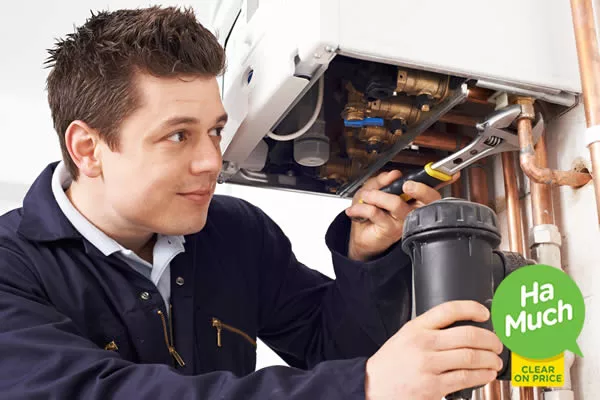
| Location in UK | Hourly Rate | Daily Rate |
|---|---|---|
| Heating Engineer near Leicester | £40 | £229 |
| Heating Engineer near Carmarthenshire | £28 | £200 |
| Heating Engineer near Isle of Wight | £42 | £263 |
| Heating Engineer near St Helens | £40 | £238 |
| Heating Engineer near Vale of Glamorgan | £38 | £232 |
| Heating Engineer near Canterbury | £45 | £252 |
| Heating Engineer near Nuneaton & Bedworth | £40 | £234 |
| Heating Engineer near Southampton | £44 | £278 |
| Heating Engineer near Bolton | £40 | £248 |
| Heating Engineer near Lisburn | £33 | £222 |


.jpg)


.jpg)

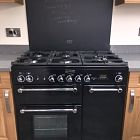
.jpg)



.jpg)
